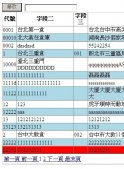1、介紹
Logging組件是微軟實現的日志記錄組件包括控制臺(Console)、調試(Debug)、事件日志(EventLog)和TraceSource,但是沒有實現最常用用的文件記錄日志功能(可以用其他第三方的如NLog、Log4Net。之前寫過NLog使用的文章)。
2、默認配置
新建.Net Core Web Api項目,添加下面代碼。
|
1
2
3
4
5
6
7
8
9
10
11
12
13
14
15
16
|
[Route("api/[controller]")]public class ValuesController : Controller{ ILogger<ValuesController> logger; //構造函數注入Logger public ValuesController(ILogger<ValuesController> logger) { this.logger = logger; } [HttpGet] public IEnumerable<string> Get() { logger.LogWarning("Warning"); return new string[] { "value1", "value2" }; }} |
運行結果如下:

我剛開始接觸的時候,我就有一個疑問我根本沒有配置關于Logger的任何代碼,僅僅寫了注入,為什么會起作用呢?最后我發現其實是在Program類中使用了微軟默認的配置。
|
1
2
3
4
5
6
7
8
9
10
11
|
public class Program { public static void Main(string[] args) { BuildWebHost(args).Run(); } public static IWebHost BuildWebHost(string[] args) => WebHost.CreateDefaultBuilder(args)//在這里使用了默認配置 .UseStartup<Startup>() .Build(); } |
下面為CreateDefaultBuilder方法的部分源碼,整個源碼在 https://github.com/aspnet/MetaPackages ,可以看出在使用模板創建項目的時候,默認添加了控制臺和調試日志組件,并從appsettings.json中讀取配置。
|
1
2
3
4
5
6
7
8
9
10
11
12
13
14
15
16
17
18
19
20
21
|
builder.UseKestrel((builderContext, options) =>{ options.Configure(builderContext.Configuration.GetSection("Kestrel"));}).ConfigureAppConfiguration((hostingContext, config) =>{ var env = hostingContext.HostingEnvironment; //加載appsettings.json文件 使用模板創建的項目,會生成一個配置文件,配置文件中包含Logging的配置項 config.AddJsonFile("appsettings.json", optional: true, reloadOnChange: true) .AddJsonFile($"appsettings.{env.EnvironmentName}.json", optional: true, reloadOnChange: true); .......}).ConfigureLogging((hostingContext, logging) =>{ //從appsettings.json中獲取Logging的配置 logging.AddConfiguration(hostingContext.Configuration.GetSection("Logging")); //添加控制臺輸出 logging.AddConsole(); //添加調試輸出 logging.AddDebug();}) |
3、建立自己的Logging配置
首先修改Program類
|
1
2
3
4
5
6
7
8
9
10
11
12
13
14
15
16
17
18
19
20
21
22
23
24
25
26
27
28
|
public class Program { public static void Main(string[] args) { //指定配置文件路徑 var config = new ConfigurationBuilder() .SetBasePath(Directory.GetCurrentDirectory())//設置基礎路徑 .AddJsonFile($"appsettings.json", true, true)//加載配置文件 .AddJsonFile($"appsettings.{EnvironmentName.Development}.json", true, true) .Build(); var host = new WebHostBuilder() .UseKestrel() .UseStartup<Startup>() .UseContentRoot(Directory.GetCurrentDirectory()) .UseConfiguration(config)//使用配置 .UseUrls(config["AppSettings:Url"])//從配置中讀取 程序監聽的端口號 .UseEnvironment(EnvironmentName.Development)//如果加載了多個環境配置,可以設置使用哪個配置 一般有測試環境、正式環境 //.ConfigureLogging((hostingCotext, logging) => //第一種配置方法 直接在webHostBuilder建立時配置 不需要修改下面的Startup代碼 //{ // logging.AddConfiguration(hostingCotext.Configuration.GetSection("Logging")); // logging.AddConsole(); //}) .Build(); host.Run(); } } |
修改Startup類如下面,此類的執行順序為 Startup構造函數 > ConfigureServices > Configure
|
1
2
3
4
5
6
7
8
9
10
11
12
13
14
15
16
17
18
19
20
21
22
23
24
25
26
27
28
29
30
31
32
33
34
35
|
public class Startup { public IConfiguration Configuration { get; private set; } public IHostingEnvironment HostingEnvironment { get; private set; } //在構造函數中注入 IHostingEnvironment和IConfiguration,配置已經在Program中設置了,注入后就可以獲取配置文件的數據 public Startup(IHostingEnvironment env, IConfiguration config) { HostingEnvironment = env; Configuration = config; } public void ConfigureServices(IServiceCollection services) { services.AddMvc(); //第二種配置 也可以這樣加上日志功能,不用下面的注入 //services.AddLogging(builder => //{ // builder.AddConfiguration(Configuration.GetSection("Logging")) // .AddConsole(); //}); } //注入ILoggerFactory public void Configure(IApplicationBuilder app, IHostingEnvironment env, ILoggerFactory loggerFactory) { if (env.IsDevelopment()) { app.UseDeveloperExceptionPage(); } //第三種配置 注入ILogggerFactory,然后配置參數 //添加控制臺輸出 loggerFactory.AddConsole(Configuration.GetSection("Logging")); //添加調試輸出 loggerFactory.AddDebug(); app.UseMvc(); } } |
這種結構就比較清晰明了。
4、Logging源碼解析
三種配置其實都是為了注入日志相關的服務,但是調用的方法稍有不同。現在我們以第二種配置來詳細看看其注入過程。首先調用AddLogging方法,其實現源碼如下:
|
1
2
3
4
5
6
7
8
9
10
11
|
public static IServiceCollection AddLogging(this IServiceCollection services, Action<ILoggingBuilder> configure) { services.AddOptions();//這里會注入最基礎的5個服務 option相關服務只要是跟配置文件相關,通過Option服務獲取相關配置文件參數參數 services.TryAdd(ServiceDescriptor.Singleton<ILoggerFactory, LoggerFactory>()); services.TryAdd(ServiceDescriptor.Singleton(typeof(ILogger<>), typeof(Logger<>))); services.TryAddEnumerable(ServiceDescriptor.Singleton<IConfigureOptions<LoggerFilterOptions>>(new DefaultLoggerLevelConfigureOptions(LogLevel.Information))); configure(new LoggingBuilder(services)); return services; } |
接著會調用AddConfiguration
|
1
2
3
4
5
6
7
8
9
10
11
12
13
14
15
16
|
public static ILoggingBuilder AddConfiguration(this ILoggingBuilder builder, IConfiguration configuration) { builder.AddConfiguration(); //下面為AddConfiguration的實現 public static void AddConfiguration(this ILoggingBuilder builder) { builder.Services.TryAddSingleton<ILoggerProviderConfigurationFactory, LoggerProviderConfigurationFactory>(); builder.Services.TryAddSingleton(typeof(ILoggerProviderConfiguration<>), typeof(LoggerProviderConfiguration<>)); } builder.Services.AddSingleton<IConfigureOptions<LoggerFilterOptions>>(new LoggerFilterConfigureOptions(configuration)); builder.Services.AddSingleton<IOptionsChangeTokenSource<LoggerFilterOptions>>(new ConfigurationChangeTokenSource<LoggerFilterOptions>(configuration)); builder.Services.AddSingleton(new LoggingConfiguration(configuration)); return builder; } |
下面來看打印日志的具體實現:
|
1
2
3
4
5
6
7
8
9
10
11
12
13
14
15
16
17
18
19
20
21
22
23
24
25
26
27
28
29
|
public void Log<TState>(LogLevel logLevel, EventId eventId, TState state, Exception exception, Func<TState, Exception, string> formatter) { var loggers = Loggers; List<Exception> exceptions = null; //loggers為LoggerInformation數組,如果你在Startup中添加了Console、Deubg日志功能了,那loggers數組值有2個,就是它倆。 foreach (var loggerInfo in loggers) { //循環遍歷每一種日志打印,如果滿足些日子的條件,才執行打印log方法。比如某一個日志等級為Info, //但是Console配置的最低打印等級為Warning,Debug配置的最低打印等級為Debug //則Console中不會打印,Debug中會被打印 if (!loggerInfo.IsEnabled(logLevel)) { continue; } try { //每一種類型的日志,對應的打印方法不同。執行對應的打印方法 loggerInfo.Logger.Log(logLevel, eventId, state, exception, formatter); } catch (Exception ex) { if (exceptions == null) { exceptions = new List<Exception>(); } exceptions.Add(ex); } } } |
下面具體看一下Console的打印實現:
首先ConsoleLogger實現了ILogger的Log方法,并在方法中調用WriteMessage方法
|
1
2
3
4
5
6
7
8
9
10
11
12
13
14
15
16
17
18
19
20
21
22
23
24
25
26
27
28
29
|
public void Log<TState>(LogLevel logLevel, EventId eventId, TState state, Exception exception, Func<TState, Exception, string> formatter) { //代碼太多 我就省略一些判空代碼 var message = formatter(state, exception); if (!string.IsNullOrEmpty(message) || exception != null) { WriteMessage(logLevel, Name, eventId.Id, message, exception); } } public virtual void WriteMessage(LogLevel logLevel, string logName, int eventId, string message, Exception exception) { ....... if (logBuilder.Length > 0) { var hasLevel = !string.IsNullOrEmpty(logLevelString); //這里是主要的代碼實現,可以看到,并沒有寫日志的代碼,而是將日志打入到一個BlockingCollection<LogMessageEntry>隊列中 _queueProcessor.EnqueueMessage(new LogMessageEntry() { Message = logBuilder.ToString(), MessageColor = DefaultConsoleColor, LevelString = hasLevel ? logLevelString : null, LevelBackground = hasLevel ? logLevelColors.Background : null, LevelForeground = hasLevel ? logLevelColors.Foreground : null }); } ...... } |
下面看日志被放入隊列后的具體實現:
|
1
2
3
4
5
6
7
8
9
10
11
12
13
14
15
16
17
18
19
20
21
22
23
24
25
26
27
28
29
30
31
32
33
34
35
36
37
38
39
40
41
42
43
44
45
46
47
48
49
50
51
52
53
54
55
56
57
58
59
60
61
62
|
public class ConsoleLoggerProcessor : IDisposable { private const int _maxQueuedMessages = 1024; private readonly BlockingCollection<LogMessageEntry> _messageQueue = new BlockingCollection<LogMessageEntry>(_maxQueuedMessages); private readonly Thread _outputThread; public IConsole Console; public ConsoleLoggerProcessor() { //在構造函數中啟動一個線程,執行ProcessLogQueue方法 //從下面ProcessLogQueue方法可以看出,是循環遍歷集合,將集合中的數據打印 _outputThread = new Thread(ProcessLogQueue) { IsBackground = true, Name = "Console logger queue processing thread"public virtual void EnqueueMessage(LogMessageEntry message) { if (!_messageQueue.IsAddingCompleted) { try { _messageQueue.Add(message); return; } catch (InvalidOperationException) { } } WriteMessage(message); } internal virtual void WriteMessage(LogMessageEntry message) { if (message.LevelString != null) { Console.Write(message.LevelString, message.LevelBackground, message.LevelForeground); } Console.Write(message.Message, message.MessageColor, message.MessageColor); Console.Flush(); } private void ProcessLogQueue() { try { //GetConsumingEnumerable()方法比較特殊,當集合中沒有值時,會阻塞自己,一但有值了,知道集合中又有元素繼續遍歷 foreach (var message in _messageQueue.GetConsumingEnumerable()) { WriteMessage(message); } } catch { try { _messageQueue.CompleteAdding(); } catch { } } } } |
以上就是本文的全部內容,希望對大家的學習有所幫助,也希望大家多多支持服務器之家。
原文鏈接:http://www.cnblogs.com/MicroHeart/p/9341286.html












